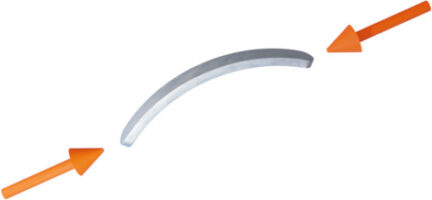BUCKLING OF STRUCTURAL MEMBERS: CAUSES AND SOLUTIONS
Buckling of Structural Members: Causes and Solutions
Buckling is a critical concern in the field of structural engineering, where the stability and safety of buildings, bridges, and various other structures are of utmost importance. Understanding the causes of buckling and implementing effective solutions is essential to prevent catastrophic failures. In this article, we will delve into the primary causes of buckling and explore potential solutions to mitigate this structural phenomenon.
1. What is Buckling?
Buckling occurs when a structural member, such as a column or beam, undergoes sudden, uncontrollable deformation and failure due to excessive compressive forces. It is characterized by lateral deflection or bending, which can lead to instability and, in severe cases, structural collapse.
2. Causes of Buckling:
Understanding the root causes of buckling is crucial for preventing its occurrence. The primary factors include:
a. Excessive Compressive Loads:
Buckling often results from an overload of compressive forces on a structural member. The material’s ability to withstand these forces can be surpassed, leading to buckling.
b. Slenderness Ratio:
The slenderness ratio, defined as the ratio of a structural member’s length to its least lateral dimension, plays a significant role in buckling. Members with a high slenderness ratio are more susceptible to buckling.
c. Material Properties:
The type and quality of the material used in a structure can also influence buckling. Materials with lower resistance to compression are more prone to buckling.
d. Imperfections:
Imperfections in the shape or alignment of a structural member can weaken its ability to resist buckling. Minor deviations can have a significant impact.
3. Solutions to Prevent Buckling:
Preventing buckling requires a comprehensive approach that addresses the causes mentioned above. Here are some solutions:
a. Proper Design:
Design structural members with appropriate dimensions and shapes, considering the expected loads. This includes optimizing the slenderness ratio to avoid excessive deflection.
b. Material Selection:
Choose materials with high compressive strength for structural members. This is particularly important in high-load-bearing elements.
c. Bracing and Reinforcement:
Bracing can provide lateral support to structural members, reducing the risk of buckling. Reinforcing weak points with additional material or strengthening elements can also enhance stability.
d. Regular Inspections:
Regular inspections of structural members can help detect any imperfections or damage early on. Timely repairs or replacements can prevent catastrophic failures.
e. Load Monitoring:
Implement a monitoring system to track the loads placed on structural members. This can help ensure that they remain within safe limits.
f. Computer Simulations:
Use advanced computer simulations to model the behavior of structural members under various loads and conditions. This can aid in identifying potential buckling issues and refining designs.
g. Codes and Standards Compliance:
Adhere to relevant building codes and industry standards to ensure that structural members are designed and constructed in compliance with safety regulations.
4. Real-World Examples:
Buckling incidents have historically led to catastrophic failures in various structures. Notable examples include the collapse of the Tacoma Narrows Bridge in 1940 due to aeroelastic flutter and the failure of the Hyatt Regency walkway in 1981 due to a design flaw.
5. Conclusion:
Buckling of structural members can have severe consequences, making it imperative for engineers and architects to prioritize stability and safety in their designs. By understanding the causes of buckling and implementing the appropriate solutions, we can ensure that our built environment remains safe and resilient. Proper design, material selection, and regular inspections are key to preventing buckling and, ultimately, safeguarding lives and property.


